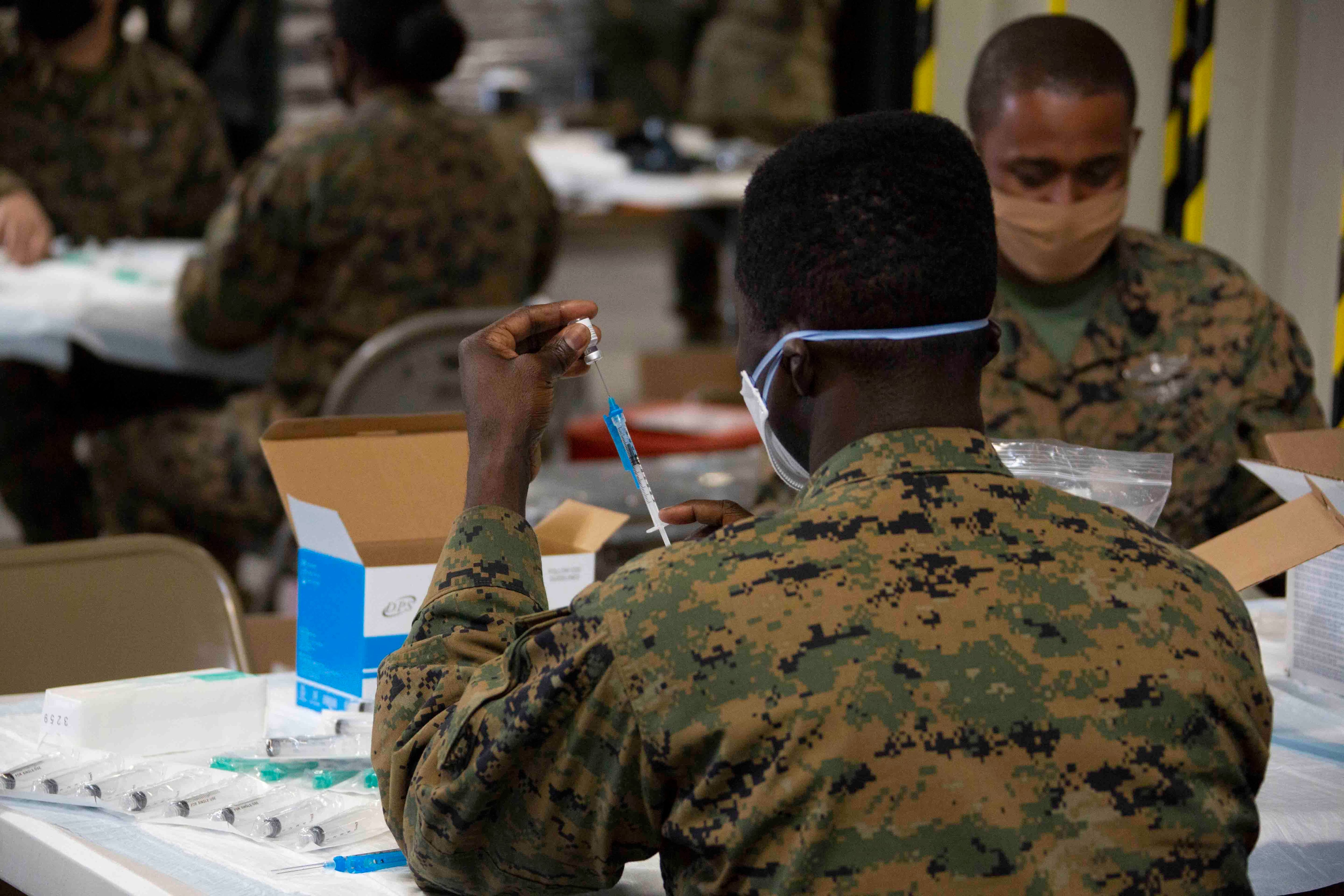Roughly 740,000 troops are partially or fully vaccinated against COVID-19, according to Defense Department numbers released Wednesday, which are now published online.
The vast majority of those doses have gone to service members in phase 1, including those working in clinics and hospitals, as first responders, deploying to or redeploying from overseas and those with pre-existing conditions. As of April 19, along with the rest of the United States, all DoD personnel and beneficiaries are eligible to receive a vaccine.
“We are encouraging everyone to get vaccinated, because these vaccines are effective and safe, and are a critical part of us getting back to normal,” Dr. Terry Adirim, the acting assistant defense secretary for health affairs, told reporters Wednesday.
As of Tuesday, 459,921 troops are fully vaccinated, and an additional 280,667 have received a first dose. They represent 28 percent of 2,603,081 doses DoD has administered, out of 3,226,290 delivered to 350 sites around the world.
The Army has administered the most doses, and the Marine Corps the least, which is in line with their statuses as the largest and smallest services.
The Marine Corps, however, shows a higher vaccination rate: 35 percent of its total force, both active and Reserve, versus the Army’s 25 percent across the active, Reserve and National Guard components. The Air Force, which also has three components, shows a 35 percent vaccination rate.
The Navy has by far the highest rate, at 53 percent.
There could be several explanations for those varying rates. DoD has been moving through a tiered vaccination scheme that prioritizes certain kinds of personnel and units, and the services have been able to make their own policies in terms of how they move through those tiers once they have offered doses to those eligible.
There is also the factor of vaccine refusal, which the Pentagon is not tracking centrally. The Marine Corps has said that nearly 40 percent of its troops have opted not to get vaccinated.
Now that all service members are eligible to receive the vaccine, including the predominantly young demographic with no preexisting conditions, those rates could fluctuate.
RELATED

Vaccination rates have been higher overseas than stateside, with officials pegging the rate at 10-to-15 percent higher. A majority of troops, families and civilians have gotten vaccinated in Indo-Pacific Command and Central Command, the director of the Defense Health Agency told Military Times.
“The only geographical combatant command that doesn’t have more than 50 percent of their assigned family members, contractors, etc., vaccinated is [European Command],” Army Lt. Gen. Ronald Place said, though he declined to speculate as to why.
According to feedback, Adirim said, some younger service members feel that they are less vulnerable to COVID-19 than they would be to vaccine side effects ― “Which, of course, we know not to be true,” she said ― while others are holding off until more vulnerable populations have a chance to be inoculated.
Though there are no department-wide incentives for vaccination, policies have started to shift to reflect Centers for Disease Control and Prevention guidance.
For instance, earlier this month, DoD lifted two-week quarantine requirements before or after deployments, temporary duty travel and permanent change-of-station moves for troops who have been vaccinated.
As of Wednesday, more than 185,000 troops have tested positive for COVID-19, 8 percent of the population, while the U.S. in general is at nearly 10 percent.
Of those troops, roughly 1,600 have been hospitalized with serious complications, and 24 have died.
“Certainly, if more people get vaccinated, and the lower the transmission within the United States...if at some point in time the virus is not transmittable, then we could get much closer to normal,” Adirim said, in terms of lifting physical distancing and mask mandates.
Meghann Myers is the Pentagon bureau chief at Military Times. She covers operations, policy, personnel, leadership and other issues affecting service members.





